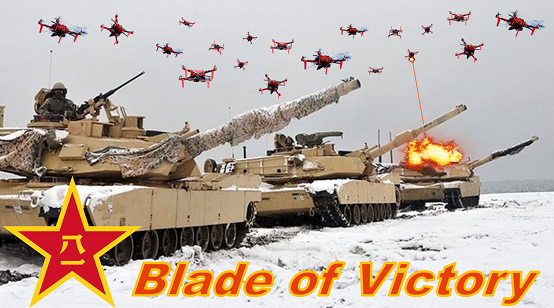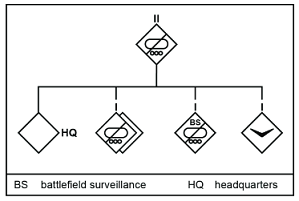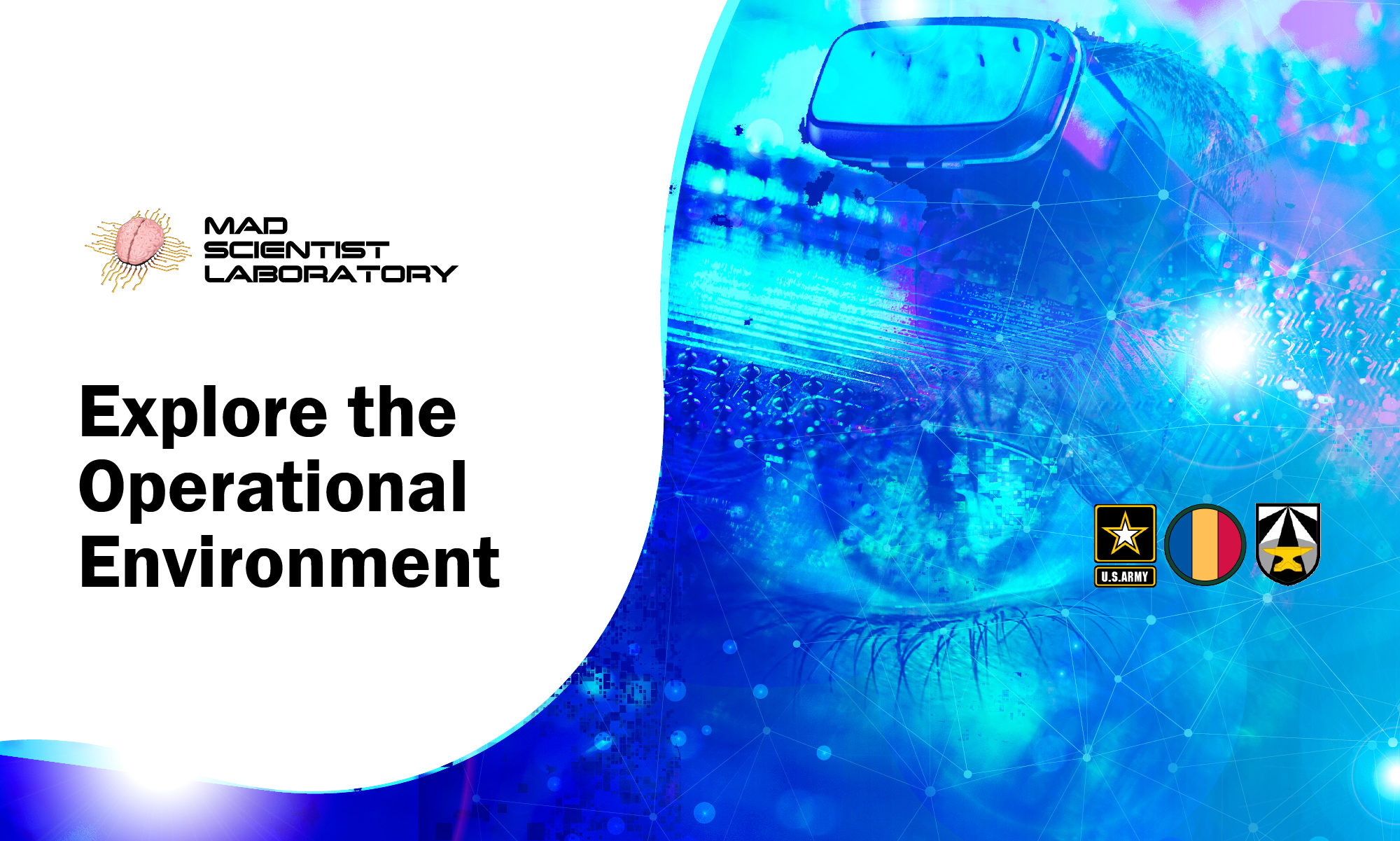[Editor’s Note: Today’s post consists of two articles — excerpted from the July 2021 edition of the OE Watch, published by the Foreign Military Studies Office, TRADOC G-2, and accessed via the Operational Environment Enterprise home page — your portal to the latest TRADOC G-2 content! As noted previously by Dr. Jacob Barton, China has been modernizing the People’s Liberation Army (PLA) across the Doctrine, Organization, Training, Materiel, Leadership and education, Personnel, Facilities, and Policy (DOTMLPF-P) spectrum. The first excerpt below describes how the PLA is progressing its Unmanned Aerial Vehicle (UAV) capabilities from fleet operations to “informationized” group operations to “intelligentized” swarm operations in its drive to realize an unmanned battlefield. The second excerpt describes how they are employing Electronic Warfare (EW) UAVs to provide their OPFOR with a “Blue” EW capability — enabling PLA Commanders to test their respective Brigades’ mettle against a “cunning blue army” in a complex electromagnetic environment during live training exercises.
Read on to learn how our Pacing Threat is upping its game — then drill down further at the bottom of the post to learn more about China and the PLA, review how they are harnessing the power of autonomous systems, and explore more about robotics and autonomy in the Operational Environment!]
China’s Conceptualization Work on UAVs: Toward an Unmanned Battlefield
by Kevin McCauley, OE Watch Commentary
 As military theorists in China’s PLA analyze the impact of intelligent technologies on future warfare, a recent article in the People’s Liberation Army Daily, the PLA’s daily news journal, discusses concepts for employing UAV groups based on the progression from mechanized warfare capabilities to informationized and intelligent technological capabilities. This represents a technological progression from “UAV fleet operations” to informationized “UAV group operations” and finally to “UAV swarm operations” using intelligent technologies to achieve a degree of autonomy. This last stage leads the theorists to visualize what they described as an “unmanned battlefield.”
As military theorists in China’s PLA analyze the impact of intelligent technologies on future warfare, a recent article in the People’s Liberation Army Daily, the PLA’s daily news journal, discusses concepts for employing UAV groups based on the progression from mechanized warfare capabilities to informationized and intelligent technological capabilities. This represents a technological progression from “UAV fleet operations” to informationized “UAV group operations” and finally to “UAV swarm operations” using intelligent technologies to achieve a degree of autonomy. This last stage leads the theorists to visualize what they described as an “unmanned battlefield.”
The authors describe the concept of UAV fleet operations as rooted in mechanized warfare, placing this stage of UAV group employment within the current capabilities of the PLA. UAV fleet operations are described as a collection of three or more UAVs operating under a unified command and implementing the same combat action to achieve a common goal. UAV fleet operations reflect mechanized warfare capabilities in that their combat effectiveness is generated by quantity and scale enhancing firepower support and killing efficiency. The advantages include that this type of operation is conducive to centralized management and high efficiency for simple tasks; disadvantages include low efficiency for task coordination, weak distributed task capabilities, weak group scalability, and weak adaptability. The primary missions are firepower focused.
UAV group operations represent informationized warfare capabilities. Currently, the PLA is in the process of modernization based on information technologies with these capabilities growing within the force. UAV groups are interconnected by onboard computers and communications network. UAV groups operate  under a unified command, which jointly manages the execution of a common task. The UAV group acts as a unified whole cooperating in a combat activity. UAV group operations generate combat power based on information empowerment, networking, and coordination of actions within the group. Advantages include high efficiency for task coordination, strong operational flexibility, the capability to perform distributed combat tasks, and group scalability; disadvantages include a high requirement for information technologies, complex UAV design, and vulnerability to electronic interference.
under a unified command, which jointly manages the execution of a common task. The UAV group acts as a unified whole cooperating in a combat activity. UAV group operations generate combat power based on information empowerment, networking, and coordination of actions within the group. Advantages include high efficiency for task coordination, strong operational flexibility, the capability to perform distributed combat tasks, and group scalability; disadvantages include a high requirement for information technologies, complex UAV design, and vulnerability to electronic interference.
UAV swarm operations are described as a biological simulation of a bee colony enabled by intelligent technologies. A UAV swarm is defined as a group of autonomous, networked UAVs working to achieve a unified operational objective. The UAV swarm is based on groups of intelligent drones working in collaboration. The individual drones might have low intelligence, but through interactive and reactive rules they emerge as a complex group with self-organizational capabilities. Characteristics include decentralization, flexibility, and group intelligence working towards a common objective. The authors believe that UAV swarm operations subvert traditional warfare concepts through their autonomous combat capabilities of self-adaptation, self-organizing networks, self-coordination, and self-decision making. Advantages include high efficiency for task coordination, strong operational flexibility and battlefield adaptability, strong capability to conduct distributed tasks, and group scalability. Disadvantages include a requirement for large numbers of advanced drones and high research requirements in biological simulation technology. While many of these UAV concepts are generally well-known, this current PLA research on intelligent technologies and operational concepts will assist in the eventual deployment of these capabilities within the military, and as the authors envision, toward an unmanned battlefield.

“the development of UAV new operation mode is becoming more and more mature.”
Source: “群式作战,演绎无人战场新图景 (Group type operations, deducing a new vision of the unmanned battlefield),” People’s Liberation Army Daily (PLA’s daily news journal), May 20, 2021. http://www.81.cn/jfjbmap/content/2021-05/20/content_289733.htm
“At present, UAV group type operations has entered the battlefield practice from the concept research, which indicates that the development of UAV new operation mode is becoming more and more mature. UAV group operations usually include UAV fleet operations, UAV group operations and UAV ‘swarm’ operations. Because there is no authoritative concept description of the three systems at home or abroad, it is easy to cause conceptual confusion, which is not conducive to the in-depth study of UAV group operations. Therefore, it is necessary to analyze the three concepts in order to clarify the understanding, so as to deepen the understanding of the characteristics and laws of UAV operations.”
“UAV group type operation is a new and practical operation mode, which has great operation potential and application prospect, especially for UAV ‘swarm’ operations, which may subvert the traditional operation mode, and should receive great attention. A correct understanding of UAV fleet operations, UAV group operations and UAV ‘swarm’ operations is an important foundation and prerequisite for accelerating the development of mechanized, information-based and intelligent integration of UAV group operations. In actual combat, we should not only pay attention to the application research of UAV fleet operation and UAV group operation, but also carry out the research of UAV ‘swarm’ technology and operational applications in advance. Only through preparation can we grasp the initiative.”
China Incorporates Electronic Warfare UAVs into Complex Training
by Kevin McCauley, OE Watch Commentary

The Peoples’ Liberation Army (PLA) has used UAVs for reconnaissance and strike operations in training for years. Recently the PLA press reported on an exercise by the 72nd Group Army in the Eastern Theater conducting a confrontation exercise with an “Electromagnetic Blue Army,” employing electronic warfare UAVs to provide a complex electromagnetic environment for the brigade’s training. The brigade had recently received new communications and air defense-related equipment to be tested in the electromagnetic environment. The electronic warfare equipment manufacturer assisted the opposing force in the exercise. The equipment manufacturer also participated in an after-action assessment suggesting tactics, techniques, and procedures for the brigade to employ in the future. This unit’s innovation was a unique example of “Blue” electronic warfare incorporated into the PLA’s new military training system.
“At present, our army is speeding up the construction of a new military training system to comprehensively improve the training level and the ability to win.”
Source: “外请“强敌”磨砺对抗硬功 (A ‘Strong Enemy’ is invited to sharpen the hard skills of confrontation),” People’s Liberation Army Daily (PLA’s daily news journal), May 20, 2021. http://www.81.cn/jfjbmap/content/2021-05/20/content_289716.htm
“In the air, a number of UAVs mounting jamming equipment launched a ‘surprise attack’; In a ground shelter, the operator flexibly adopts a variety of means to implement anti-jamming…. Recently, in a brigade training ground of the 72nd group army, a number of air-ground electronic countermeasures have been launched fiercely. What makes the reporter’s eyes bright is that this time the ‘cunning blue army’ is not a brother army, but an equipment manufacturer.”
“At present, our army is speeding up the construction of a new military training system to comprehensively improve the training level and the ability to win. This is a road that no one has ever gone through before. No stage is ready for everything. There will always be difficulties or contradictions in one way or another. If you encounter problems and take a detour, or simply ‘wait and see’, you will miss the opportunity and accomplish nothing.”
If you enjoyed this post, learn more about China as our Pacing Threat in:
China: Our Emergent Pacing Threat
China’s PLA Modernization through the DOTMLPF-P Lens, by Dr. Jacob Barton
“Intelligentization” and a Chinese Vision of Future War
Competition and Conflict in the Next Decade
Disrupting the “Chinese Dream” – Eight Insights on how to win the Competition with China
Competition in 2035: Anticipating Chinese Exploitation of Operational Environments
Disinformation, Revisionism, and China with Doowan Lee and associated podcast
The following TRADOC G-2 products: ATP 7-100.3, Chinese Tactics; People’s Liberation Army Ground Forces Quick Reference Guide; China Tri-fold; the China products page; and information on PLA weapon systems accessed via the Worldwide Equipment Guide (WEG) on the OE Data Integration Network (ODIN).
… review the PLA’s efforts to harness the power of autonomous systems in the following content:
A Chinese Perspective on Future Urban Unmanned Operations
China: “New Concepts” in Unmanned Combat and Cyber and Electronic Warfare
The PLA: Close Combat in the Information Age and the “Blade of Victory”
Future of Unmanned Ground Systems: Growing International Landscape, by proclaimed Mad Scientist Melanie Rovery, Editor, Unmanned Ground Systems, Janes
… and explore more about robotics and autonomy in the Operational Environment in:
Insights from the Robotics and Autonomy Series of Virtual Events post and the associated webinar content (presenter biographies, slide decks, and notes) and videos [access via a non-DoD network]
How Big of a Deal are Drone Swarms? by proclaimed Mad Scientist Zak Kallenborn
Jomini’s Revenge: Mass Strikes Back! by proclaimed Mad Scientist Zachery Tyson Brown
“Own the Night” and the associated Modern War Institute podcast with proclaimed Mad Scientist Mr. Bob Work
Top Attack: Lessons Learned from the Second Nagorno-Karabakh War and associated podcast
Insights from the Nagorno-Karabakh Conflict in 2020 and Insights from the Nagorno-Karabakh Conflict in 2020 (Part II)
“Once More unto The Breach Dear Friends”: From English Longbows to Azerbaijani Drones, Army Modernization STILL Means More than Materiel, by Ian Sullivan



